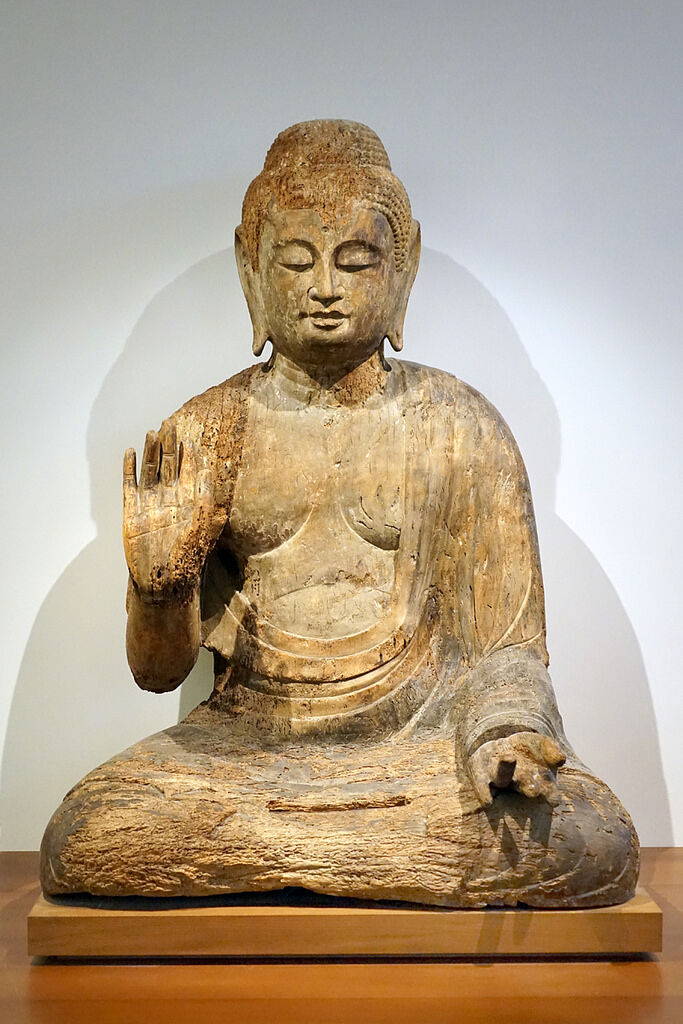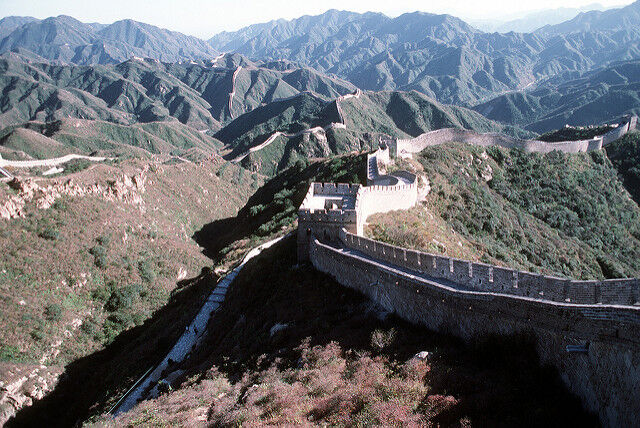The concepts covered in this factsheet go beyond those seen in secondary school. It is intended as a supplement for those who are curious to find out more.
The Han Empire was the first dynasty to truly unify China. In the 2nd century BC, following internal wars between clans, Chinese territory was divided into kingdoms. Its founder, Han Gaozu, was a simple peasant from Mongolia, dissatisfied with his lot, who managed to mobilise several other peasants. He formed an army of peasants and overthrew the ruling Qin dynasty. Han Gaozu became a duke, a marquis and finally a prince. The dynasty he founded reigned from 206 BC to 220 AD, and to this day remains the longest in human history (400 years). Twenty-eight emperors from the same dynasty succeeded each other.
The Han contributed much to China, enabling it to become a powerful and influential nation in a number of technical, artistic and ideological fields. It was under the Han Empire that Confucianism was adopted as the official ideology of the Chinese state. Buddhism later became popular under this dynasty.
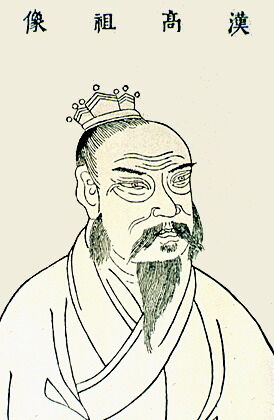
Han Gaozu
Workers in the service of the empire were often nobles, aristocrats or influential people in their community who personally knew someone in the imperial family. The Han dynasty changed this way of recruiting state officials: it advocated appointment on merit, i.e. the selection of workers through a system of examinations rather than simple consideration of the social position or title of candidates. It was no longer enough to know someone close to the imperial family, but it was necessary to be talented and virtuous to hope to work for the State. This administrative system was called the Mandarinate. Mandarins helped the emperor to manage the state.
The large and efficient governance structure under the Han allowed the Chinese Empire to expand rapidly by annexing territories (including Mongolia and Korea) and their populations, but population growth outstripped the empire's agricultural capacity. Peasant discontent grew and culminated in the temporary overthrow of the Han Empire in year 9.
For around twenty years, the short-lived Xin dynasty replaced the Han dynasty. In 23 AD, the Han dynasty regained the throne and restored the administration, but this time rewarded the peasants and rich landowners by dividing the empire into 13 principalities, giving more responsibility to each region.
The first university was founded by the Han dynasty towards the end of the 2nd century. It served as an educational establishment for the empire's future civil servants. Imperial orders became easier to transmit in writing from one region to another, as all regional officials could now read and write standardised Mandarin. The standardisation of the language and the construction of major roads crossing the entire territory contributed to the development of trade between peoples and empires. The Chinese emperor Wudi was one of the pioneers in this field, favouring the development of China's infrastructure, with land and sea routes facilitating the transport of goods. He led China's expansion and influence all the way to Europe.
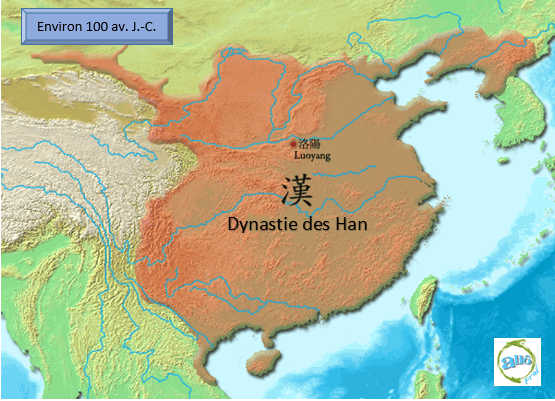
Han Empire
Note: English image coming soon
The empire established a long trade route across the whole of Central Asia, reaching Persia and even the Byzantine Empire (the name given to the Eastern Roman Empire). Trade grew and developed between Asia, Europe and North Africa. Exports and imports of precious metals, salt, iron, wool, ivory, spices and silk became commonplace. Made exclusively by Chinese craftsmen from the silkworm, silk was highly prized by the Romans.
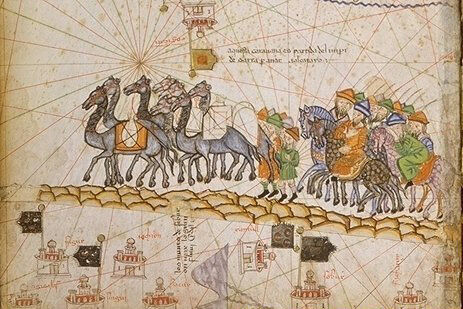
The Silk Road
Note: English image coming soon
The Han Empire believed in the economic, intellectual and artistic development of its people. The regents set up art schools where masters and disciples exchanged pottery, drawing and poetry techniques. At this time, there were a number of figurines representing people, animals, houses and farms. These miniature sculptures were made mainly of terracotta and were covered with a layer of natural latex (lacquer) which, as it dried, protected the handcrafted piece. It was under the Han that the first porcelains appeared, fine ceramics made from white clay.
The art of writing also spread with the advent of paper: this Chinese discovery facilitated the precision and fluidity of movements when writing. This way of applying oneself as one glides the ink-impregnated brush across the paper gave rise to a new art form: calligraphy, the art of shaping characters correctly.
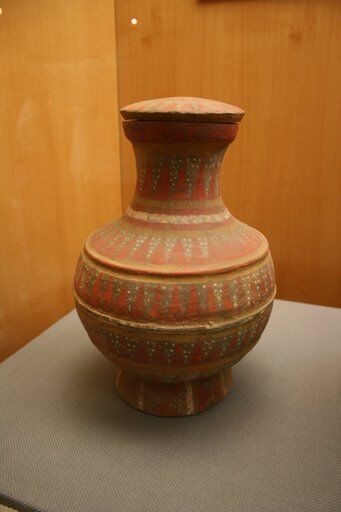
Han ceramics
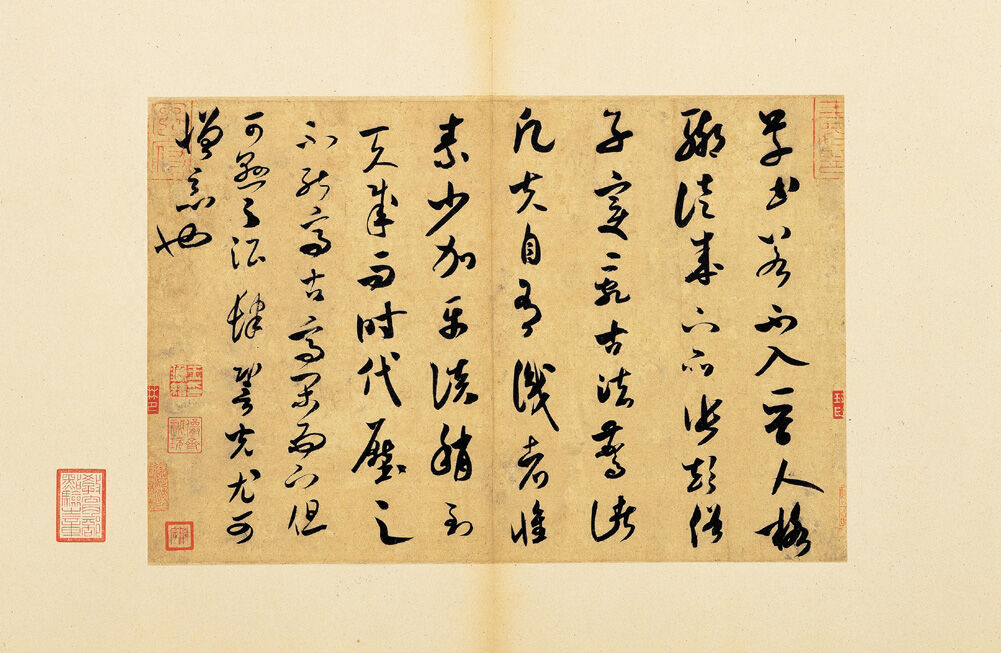
Chinese calligraphy
For several centuries, the Han Empire contributed to China's greatness and wealth by encouraging trade, as well as cultural and ideological exchanges with other regions. Han China produced many inventions, including paper, porcelain, the rudder (for ships) and the kite.
The Han Empire succeeded the Qin dynasty, which advocated not only the economic and technical development of China (the emperor began building the Great Wall of China), but also the flourishing of Chinese thought, literature and the arts. This desire to develop an ideology, a philosophy of life, goes back to Confucius. The philosophy inspired by this man is known as Confucianism.
Confucianism is a philosophy of life, the oldest in China, which originated with Kong Fuzi, known as Confucius, a Chinese philosopher and thinker born in 551 BC. As a young man, Confucius seemed curious, argued a lot and acquired a great knowledge of laws, music and nature. By the time he was an adult, he was known throughout China. He attracted disciples who followed his teachings. His philosophy was as follows: a man who cultivates himself will have a positive influence on those around him and therefore on society. In other words, the individual must educate himself and learn to question his heart, his reason and his actions, so that he can live in harmony with himself and his community. The disciples transcribed the conversations of their philosopher master shortly after his death.
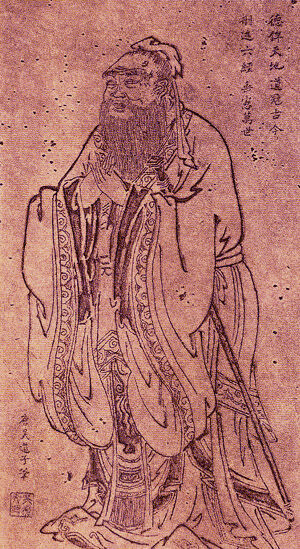
Kong Fuzi aka Confucius
Confucianism is considered to be a philosophy of life rather than a religion, since it does not refer to a superior being or a deity to whom we owe respect and obedience. Confucianism became popular in China shortly after the death of Confucius, around 480 B.C. This moral philosophy attracted many followers, as did the religions of Buddhism and Taoism. Confucianism advocates harmony in human relations by following a few moral rules: there are five facets of the universe to be followed, or five virtues, including goodness, righteousness, propriety, wisdom and loyalty. The basic rules are contained in a collection called The Talks. In short, Confucianism establishes a moral code that defines the acceptable limits of our actions in all types of situations, while bringing to the fore values related to social justice, tolerance, peace and respect for traditions. It is a guide to life, a moral discipline that guides behaviour with oneself and with others. Confucianism remained the most widely practised philosophy of life in China until the early 20th century.
Created by Laozi (or Lao Tzu), Taoism is a system of religious and philosophical thought whose central concept is the balance between nature and society. The tao, which means the way, indicates the path to take so that man can harmonise with nature.
The individual must respect the rhythm of nature. Taoists celebrated nature with offerings, sacrifices, festivals and other celebrations. This religion places the consciousness and spirituality of the individual at the centre of its principles. Life and wisdom are intimately linked to the cycles of nature. During the Han Empire, Taoism was practised first by the elite and then by the general population.
Later, Taoism would add Yin and Yang as a religious symbol: the concept and explanation of all natural phenomena. This is the meaning of balance: all energy is defined in the duality of Yin and Yang. Yin represents feminine energy, passivity and darkness. Yang represents solar energy, light and male force.
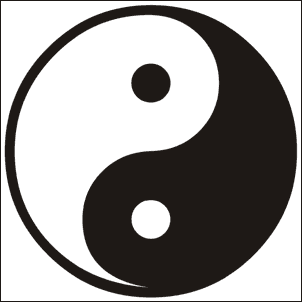
Yin and Yang
It was during the Han dynasty that the Buddhist school of thought emerged. Missionaries from Central Asia and disciples of Buddha introduced this philosophy to China in the first century AD. Buddhist sacred texts were translated into Chinese, and Buddhists took advantage of the generosity of the empire and its people to build monasteries. In this way, they could devote themselves to meditation without having to work. The founder of Buddhism was Siddartha Gautama, and the name Buddha, given to him by his disciples, simply meant a state of awakening.
Siddartha (or Buddha) came from the north of India. He came from a wealthy family and received a good education. He had everything he needed to be happy (a comfortable life; parents, wife and children who loved him), but in reality he felt profound dissatisfaction. His long walks and his encounters with the elderly, the sick and the bereaved gave rise to his Buddhist philosophy.
One day, Siddhartha decided to abandon his life of luxury, his family and his friends to devote himself to the search for the voice of salvation. He wanted to understand why we suffer and how to remedy it. After several years of travel and meditation, Siddharta achieved awakening or nirvana, that is, deliverance, enlightenment in understanding the causes of human suffering and the steps to follow to eliminate it and thus attain total inner peace. To reach nirvana, we must renounce material attachment and sense pleasures, and live in moderation without ever falling into excess. To eradicate suffering, covetousness, hatred and wrongdoing must be eliminated.
This school of thought can be associated with a philosophy (like Confucianism) or a religion, since it is based on a belief in life after death. In addition, followers of Buddhism believe that we obey the law of karma, which states that nothing happens by chance and that every action has a consequence. Buddhists also believe in successive rebirths, also known as reincarnations.
The construction of this enormous rampart criss-crossing the mountain ranges and vast plains of northern China began in the 4th century BC, spread over a period of 1,700 years and required the labour of several million Chinese workers throughout the ages.
The Great Wall had two main functions:
- to protect the empire against attacks from barbarian peoples (peoples from outside imperial territory);
- to ensure the rapid movement of military garrisons, wagons and food from one region to another.
After China was unified and its many kingdoms merged under the Qin Empire, it was decided to build the Great Wall to protect the country from barbarian attacks. The next empire, the Han dynasty, continued to build the wall, widening it in places and adding observation turrets, etc. The average width of the Great Wall is 7 metres, its height can reach 15 metres and its length is 6,000 kilometres.
